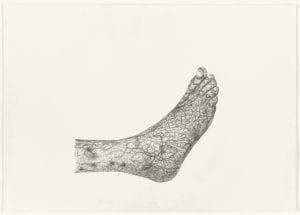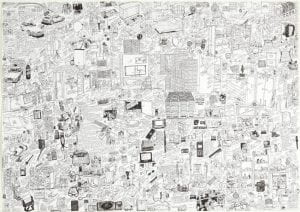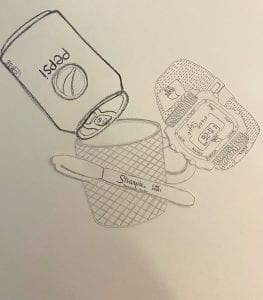Homework #16
Monday, November 30th
Sketchbook Prompts Check 4
All sketches, classwork, projects, exercises, homework, and my GE Assignment have been uploaded to this blog. Please consult the tabs to the side to view the various assignments.
Homework #15
Monday, November 23rd
GE Assignment Completed in Completion and Complies with All Guidelines.
Assignment has been submitted to Carmen.
Please see the “GE Assignment” tab to the right to view the drawing and essay.
Homework #14
Monday, November 16th
250-word response to The Secret of Drawing 2 – Storylines – Documentary Video 2005
Include the names of at least three artists/groups of interest to you
I was very fascinated and intrigued by Matisse’s idea that while those who tell stories must use the commonly shared language of words, each artist is able to use their own “language” through stylistic elements and design. I had never considered this unique characteristic of drawing and art. I love the work of Charles Shultz and the Peanuts, and I have loved it since I was little. I was unaware that Shultz grew up depressed, and I did not notice that his sadness seeped into his work. I never noticed the negative undertone of Shultz’s work, which means the effort or goal of the comic to give the viewer a break from life was achieved. William Hogarth, “the father of the modern political cartoon,” was able to incredibly capture a humorous image while conveying a message/idea, such as the cartoon he used to deter people from drinking gin. Hogarth’s ability to achieve two things at once (infuse fear or his message and humor), was incredibly mesmerizing as the viewer continuously searches for little details and humorous innuendos throughout the work. I was shocked and stunned to learn Pablo Picasso dabbled in satirical cartoon work. I was quite taken aback by the way Picasso was able to convey a story and opinion through his abstract and unique style. I was very fascinated by Misako Rocks, and the way she used other comic books as a “textbook” rather than going to art school to develop her style. Watching her work was relaxing.
Homework #13
Monday, November 9th
250-word response to The Secret of Drawing 3 – All in the Mind – Documentary Video 2005
Include the names of at least three artists/groups of interest to you.
I am quite inspired by the way the narrator describes drawing as a map of the mind, or as a visual representation of the conscious and unconscious mind. I very much agree with him as I often think about my dreams in an effort to bring my internal creativity and emotions to life. The works by James Gillrav are very intriguing in my opinion. Gillrav uses what appears to be trivial, youthful, and messy lines to create mesmerizing pictures, of people he actually knew. The evolution of drawing throughout aging as children become more familiar with the way to control line is a natural process, but it is quite mind boggling as to how that occurs. I enjoyed Sarah Simblet’s anatomical drawings, especially the drawing of the cross-section of the heart. In addition to Simblet’s anatomical controlled learning drawings, I am intrigued by the drawings coming from her unconscious mind to express strong emotions, because they give the viewer a glimpse into Simblet’s mind and emotions without her having to say a word. I enjoyed looking at the work of Andre Masson and his surrealist work of automatic drawings. His method of calligraphy drawing to “uncover his repressed memories” leaves the viewers eye darting around the page to figure out what exactly is being depicted. Additionally, the work of the Creative Growth Art Center in Oakland, CA is not only inspirational as a result of the empowerment of a developmentally disabled population, but the works are truly beautiful and interesting.
Homework #12
Monday, November 2nd
Reflect on Project 8: Collage of Key Memories. Complete and Keep Sketchbook Up to Date.
Reflection:
My work (Project 8) does fulfill the criteria of the assignment in terms of using collage, because I used collage and outside materials to create a new work that told a story and demonstrated themes of a personal key memory. The collage activates the page by overloading the eye. There is so much going on in the work that the viewer’s eye almost doesn’t know where to look, but I actually like that about the work in this case because it reflects the blur like effect of looking out the window on the highway. The strengths of the work include the wide variety of things to look at. One could look at the work for a very long time and still have new things to look at and interpret. Another strength of this work is the contrasting use of colors. The mountains are bright and colorful, popping against the black and white patterned background. To improve the work, I wish I was able to add more cut outs rather than having to draw the background in. However, living in a dorm during COVID gives me little access to magazines and extra materials that I can collage with.
Sketchbook:
Sketchbooks are up to date and complete. See the “Sketchbook and Inspiration” tab to the left to view sketches.
Homework #11
Tuesday, November 3rd
GE Assignment writing and drawing – Draft
Draft of GE writing assignment has been completed, approved, and submitted via Carmen.
GE Drawing Draft & GE Assignment for Review:
Homework #10
Monday, October 26th
Reflect on Project 7. Does the work fulfill the criteria of the assignment in terms of using gesture? How does the composition activate the page? What are the strengths of this work? What could be improved upon?
I think my final product for Project 7 fulfills the criteria of the assignment by demonstrating perspective, gesture, shading, and contour. Gesture is utilized in the background and as the design on the mural. The background of the composition is active, as the arrows drawn gesturally in the background demonstrate movement, speed, and activation. The strengths of the work are the dynamic aspect of it, the overwhelming components of the work keep the viewers eyes moving. The color components of my work are also a strength, adding to the visual interest of the piece. I could improve upon the shading aspect of the work, and I feel as though I could have used perspective on a larger scale to make it more meaningful in the work as a whole.
Homework #9
Monday, October 12th
Sketchbook Prompts Assignment: Second Check
Please consult the “Sketchbook Work and Inspiration” tab to the left to see all completed sketchbook assignments.
Additionally, to see the progression of uploads to the blog (including all assignments), please consult the “6 Posts Per Week Record” tab to the left.
Homework #8
Monday, October 12th
Write a 100-word response to the work you have done in Module 3. Does the work fulfill the criteria fo the assignment in terms of using perspective? Is there a sense of depth? How does the composition activate the page? What are the strengths of this work? What could be improved upon?
Response:
While reflecting on my work from this module, my feelings are very mixed. I believe my work does fulfil the criteria of the assignment(s) in terms of using perspective, but there was definitely a learning curve at the beginning. For example, I did not use perspective correctly in Project 4, but after correcting it with a marker, consulting with Professor Buckley, and doing a bit more research, I definitely furthered my understanding and began using perspective correctly by Project/Exercise 5. Aside from the first “draft” of Project 4, I believe my drawings did convey depth, especially Project 5 as the shading in the drawing really enhanced the appearance of depth. The compositions I drew were active on the page by appearing to move backward in space, showing the appearance of depth, as if you stepped into the drawing you could walk down a hallway or toward the horizon line. The strengths of the work include the straightness of the lines and the precise placement of the lines in regard to the focal point(s), making the depth and perspective depicted in the drawing all the more realistic. I could have definitely done a better job of trusting and using the class materials earlier, such as consulting the videos and readings during Project 4 so I did not have to mess up Project 4 to learn the process. Additionally, I could have done a better job of trusting the sharpness of the lines and angles created through the rules of perspective, rather than looking at the potential line and thinking, “that looks too severe” or “that doesn’t look right”. I should have trusted the rules of perspective in the beginning, and just drawn the lines the rules of perspective told me to do rather than questioning whether the placement of the line looked right.
Homework #7
Wednesday, September 23rd
Write the Writing Component of the GE Assignment.
Draft Submitted to Instructor and On Carmen
Draft Not to Be Posted On Blog
Homework #6
Tuesday, September 22nd
Read Perspective Article and Watch All YouTube Videos
Submit 7 bullet points of notes
- Types of perspective drawing include: 1 point perspective, 2 point perspective, 3 point perspective, 4 point perspective, photo perspective, perceptive perspective, parallel perspective, reverse perspective, and aerial or atmospheric perspective (from “How to Draw in Perspective” video)
- There are three general rules for drawing in perspective: 1) the closer objects are the larger they are 2) the foreground may partially or totally cover the background depending on where the objects appear in space 3)the farther away something is, the less detail is depicted and the less contrasting/saturated colors appear (from “How to Draw in Perspective” video)
- The oldest art form known to man is found in caves, as drawings on the cave walls; even cave people used perspective to draw animals they saw, and they even applied the perspective rule that the father an object is the smaller it is (from “How to Draw in Perspective” video)
- Humans have two eyes, so we see with binocular vision and our brains combine the two images to create the one image we see; therefore, multiple vanishing points result in a more natural representation of a scene in the way we see them (from “How to Draw in Perspective” video)
- The horizon always appears at eye level in all types of representation in perspective drawing, and the vanishing point always appears on the horizon line, which is also where the converging vanishing lines of the subject meet (from article “Drawing in Perspective”)
- The perspective start at the point of view of the observer, which is always the same height as the vanishing point on the horizon line (from article “Drawing in Perspective”)
- The perspective drawing is placed on a surface called the plane of the picture, which is an imaginary plane that is perpendicular to the plane observers stand on; the plane observers stand on is referred to as the ground plane (from article “Drawing in Perspective”)
Homework #5
Monday, September 14th
GE Assignment Research
Spend time looking at the artists in the GE Assignment list and the sketchbook prompts to familiarize yourself with the work of the listed artists.
My Preferred Artist: Quentin Blake
My Secondary Preferred Artist: Wassily Kandinsky
“Long” List of (7) Artists I Wish to Research/Artists Whose Work I Looked at:
- Wassily Kandinsky
- Leonard Baskin
- Bridget Riley
- Quentin Blake
- Keith Haring
- Royal Art Lodge
- Michael Landy
Short List and Response to (3) Artists’ Work of Interest for the GE Assignment:
1. Wassily Kandinsky: 1866-1944
Bio/Quick Overview: from Russia, founder of abstract modern art, used color and form to create emotion in viewers, used geometric shapes and form, painted mainly, interest in spirituality, grew up highly reactive to his environment, father put him in drawing and music classes, began painting at 30 years old, entered Russia law school in 1886, interested in color symbolism, moved around Europe quite a bit and died in France
Source: https://www.theartstory.org/artist/kandinsky-wassily/life-and-legacy/#nav
2. Quentin Blake: 1932-still alive
Bio/Quick Overview: born in London, drawn his whole life, studied English and continued school to get a teaching degree, made money whole life as illustrator and teacher, first drawings were published when he was 16 years old, drawn for magazines and books, most famous for illustrations in Roald Dahl books, since the 1990s he has been an exhibition curator, recently made large illustrations for hospitals and healthcare facilities, won numerous art prizes
Source: https://www.quentinblake.com/meet-qb/biography
3. Michael Landy: 1963-still alive
Bio/Quick Overview: born in London, went to college, first exhibited with other artists, first solo exhibition in 1989 in London, work centered around marketing and consumerism, liked to make comments on political and social scene in Britain
Source: http://visualarts.britishcouncil.org/collection/artists/landy-michael-1963/initial/l
Homework #4
Wednesday, September 9th
Sketchbook Prompt Assignment – First Check
Please consult the “Sketchbook Work and Inspiration” tab to the left to see all completed sketchbook assignments.
Additionally, to see the progression of uploads to the blog (including all assignments), please consult the “6 Posts Per Week Record” tab to the left.
Homework #3
Monday, August 31st
Still Life – From Contour Drawings to Collage and Cubist Still Life
Directions: Cut up the four contour object sketches from Exercise 2, then glue them to a new sheet creating a collage, then draw two more objects overtop of the collage.

Initial Layout of Cutout, Prior to Gluing; Note: Layout Slightly Changes When Actually Gluing, to Cover Up Stray Unremovable Marks
Homework #2
Thursday, August 27th
“The Secret of Drawing 1 – the Line of Enquiry”
Directions: Watch the video and write a 250-word response. Include three artists from the list in the response.
While watching “The Secret of Drawing 1 – the Line of Enquiry,” I felt a desire to reconnect with nature. The episode made me want to reexplore the natural landscapes and creatures that proved to be so inspirational to the historic and well-known artists of the past. For example, as Andrew Graham-Dixon flipped through the drawings of plants, animals, etc. from The Paper Museum, commissioned and organized by Cassiano dal Pozzo, I was in awe of how intricate the drawings were. The Paper Museum contained over 15,000 renderings of life, which is difficult to wrap the brain around. Additionally, I was very intrigued by the horse drawings and research conducted by George Stubbs. Stubbs took a risk by leaving portrait work to research, deconstruct, and render horses, many of which were carcasses. While the horses decomposed, Stubbs was completely devoted to mastering the anatomical structure, as well as the beauty and grace of the majestic horse. Conversely, John Russell looked to space for inspiration rather than to the natural world on Earth, and he developed an intriguing fascination with the moon. Russell’s concept that the universe must be explored to understand who we are and what our purpose may be is a concept that I can personally connect to. In addition to Russell’s beliefs, his incredibly accurate depictions of the moon during the 1st quarter are mind-boggling. After watching this video, I am excited to begin the drawing process, and I am enthusiastic about looking to my natural environment for inspiration.
250 words
Source: “The Secret of Drawing 1 – the Line of Enquiry,” Produced by the BBC, Hosted by Andrew Graham-Dixon, 2005
Homework #1:
Wednesday, August 26th
Post a link to your blog.
If you’re here, you found the link: https://u.osu.edu/chloesmithbeginningdrawing/






















